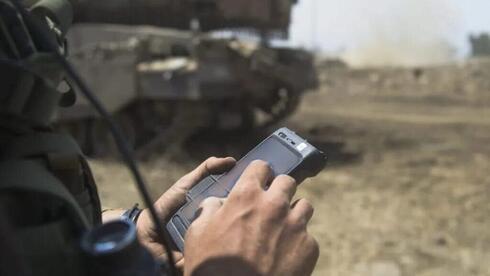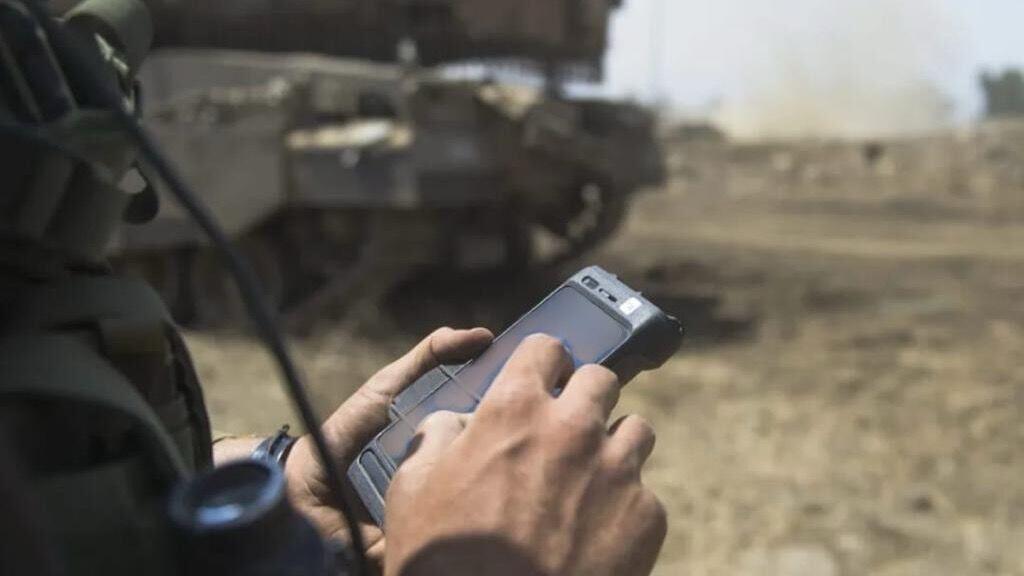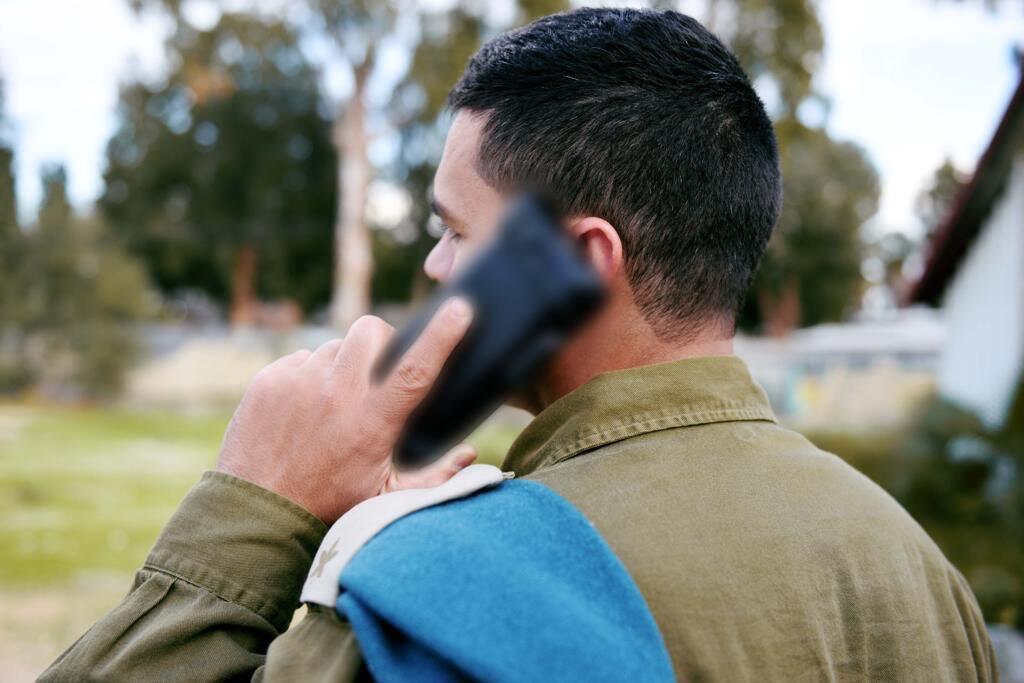
A war via cell phone: How the IDF-designed encrypted smartphone is changing the face of battle
Communications between IDF units are today almost entirely conducted via the military's encrypted smartphone. In the current war with Hamas which includes intense urban warfare, booby trapped buildings, and Hamas fighters disguised as Gazan civilians or Israeli hostages, such ease of communication is often the difference between life or death for IDF units.
Forget F-16s jets or Merkava tanks - for Israeli units entrenched in Gaza for close to three months, the most important technological innovation is the IDF’s encrypted smartphone. Every form of communication from conveying battle strategies to troops, to communicating with the homefront, to intra communications between units on the ground is now conducted via smartphone.
No longer are soldiers in battle forced to rely on cumbersome equipment for the most basic level of communications. Today, most military communications are conducted via a sleek IDF-designed encrypted smartphone launched in 2018. “The military cell phone allows you to have cell phone conversations between devices so that unauthorized people cannot listen to the conversations. Just like our private cell phones, the device allows you to run various encrypted applications,” says Lt. Col. Ofri, an officer in the IDF’s Hoshen unit in the J6 & Cyber Defense Directorate which developed the device. The directorate is responsible for cyber defense, communication, wireless transmission, computerization, and control over intelligence information in the IDF. The Directorate is also focused on combating cyber attacks against Israel and developed the device with these concerns in mind.
The phone has a touch screen, built-in GPS, an 8-megapixel camera and possesses all of the features of a regular phone with an extra long battery-life. “The phone is a fully equipped mobile device, which can make calls, transmit encrypted videos, texts, files, emails and more. We took every possible feature of a regular cell phone, and enabled encryption capabilities. There is, however, no dating application,” Ofri says, smiling.
An edge device, the cell phone utilizes networks across the country, similar to regular cellular networks we use, and the system is powered by “some of the most advanced cellular technologies in the world.” The phone is used widely by various units in the field, though Ofri cannot specify which units or the number of devices in the field for security reasons, though the number has significantly multiplied since the start of the war.
The impact of the device on warfare is indisputable, accelerating the speed and efficiency of operations, and in turn influencing and speeding up decision-making, as well as the army’s broader offensive capability. “It’s an operational system that improves soldiers’ performances, giving them relevant information for combat in the palm of their hand. With the help of the device, a soldier in the field can establish contact with a commander at his base or any other location, receive orders, photos, and anything that helps them to conduct warfare more effectively and respond quickly to the changing situation,” says Ofri. While he cannot cite specific examples, again for security reasons, he says that the phone is widely and continually used to guide soldiers to conduct an attack against enemy forces using images, videos, and real-time texting, while maintaining contact with other units and the homefront.
In the current war, which includes intense urban warfare with Hamas combatants hiding amongst civilians, booby trapped buildings, a simultaneous hostage search, and Hamas fighters disguised as civilians or hostages themselves, such ease of communication can mean the difference between life or death for IDF units. “Soldiers use cellular devices from deep within the Gaza Strip to have encrypted conversations with other soldiers in the field, with various bases or headquarters. This helps those at headquarters or other bases gain a clearer picture of the situation and give orders to soldiers in the field,” says Ofri. The phone also allows soldiers, many of whom have been in Gaza for months at a time with no reprieve, to have some communication with the outside world, allowing soldiers to listen to their children’s weddings or circumcision ceremonies via the device.
Ofri notes that the “user experience” in this case is of critical importance since poor reception or malfunction of the device can have mortal implications for the units relying on it. “Unlike a regular cell phone operator, we value the user experience. Therefore, we ensure that the device has good reception, that it functions as it should, and that its applications all work efficiently.”
Before the development of the smartphone in 2018, the military used a cell phone developed in the early 2000s called "Mountain Rose.” They discontinued Mountain Rose about five years ago when the army shifted to using the current smartphone. Before Mountain Rose, the IDF used radios for communication, and before that, carrier pigeons, immortalized in novelist Meir Shalev’s story “A Pigeon and a Boy” about a Haganah pigeon carrier during the 1948 War of Independence.
While using a smart device in warfare poses numerous benefits, there are also increased risks to cyber attacks. Israel has been the target of a massive cyber attack campaign led primarily by hacker groups affiliated with the Iranian Revolutionary Guards and Hezbollah’s Lebanese Cedar cyber unit, with numerous Israeli institutions and databases being hacked since Hamas’ 10/7 attack.
In contemporary warfare, hacking or disrupting wireless and smart devices has become an essential weapon in the arsenal of less technologically developed militaries, most notably in Russia’s war against Ukraine. Russian forces have attacked Ukrainian smart weapons and communications, jamming wireless signals to attack such devices, in a form of electronic warfare. They’ve also used radio signals to disrupt Ukrainian communications, to locate and identify troops and to manipulate smart weapons.
Israel, aware of this threat, has long made efforts to confuse its own GPS signals to misdirect potential attacks. However, the use of smart devices, relying on wireless networks, poses another risk. Ofri is adamant that the systems are “highly protected,” nor is he concerned about exposure of such technology in the media. “Anything that endangers the lives of our soldiers is not publicized.”















